Dew Point Calculator
What is Dew Point?
Dew Point is simply explained as the temperature at which air is cooled to in order for it to become saturated with moisture and so returns to a state of water droplets (instead of water vapour or steam). Most commonly it is looked at when looking at bathroom condensation and damp walls etc.
We are all familiar with condensation on windows, especially in bathrooms and laundry rooms in winter – that is a good example because the window will likely be cold and the air in the room, especially after a bath or shower, will be warm and humid. It hits the window, which is at or below dew point, and the water condenses hitting a cold spot. That is a simple example but the same principle applies to other surfaces.
What is a Dew Point Calculator?
There is a complicated formula for working out dew point (using temperature and humidity to work it out) but we have made that calculation quick and simple for you with our dew point calculator below. Simply enter the temperature and humidity and we’ll do the rest to give you a useful indication of dew point.
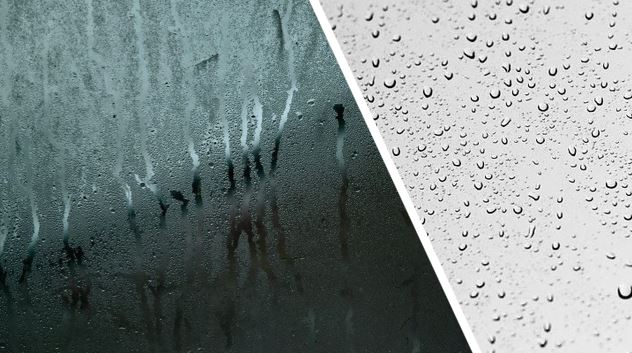
How does Condensation Form?
Basically water is in the air, in the form of vapour and the amount of this will depend on the relative humidity of the air (the more humid the air, the more moisture it is holding). Remembering that relative humidity is defined as the “the amount of water moisture / vapour in the air, expressed as a percentage, relative to what that air is capable of holding at a given temperature“ – so remember that relative humidity will change as temperature changes as warmer air is capable of holding more water vapour.
Also, humidity will rise as more water is present, such as after a water leak, and explains why unusual condensation could be a sign of a water leak in your home. Remember also that condensation can cause mould problems too.
Many modern thermometers, especially digital ones, will show relative humidity as well as temperature but will not likely show dew point but our dew point calculator will sort that for you quickly and simply.
We wrote a recent article about silica gel, which is sometimes used to control humidity and condensation (albeit on a small scale with limitations). We also have another great tool with our new Low Boiler Pressure Calculator
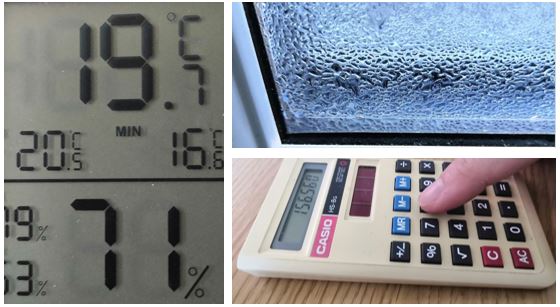
As you can see from the dew point calculator, changes in both temperature and the relative humidity will change the dew point, this is seen on our dew point chart too.
Let’s go through some examples to illustrate this:
- Let’s say it is a very warm summers day of 30°C, and the Relative Humidity is 40%. If you put those numbers into the dew point calculator the dew point is 15°C so if a surface is at or under that temperature, condensation will form. You can understand how, if you have a cold drink with ice for example, it gets condensation on the outside!
- If you think about it, with weather that hot, it is very unlikely that a regular surface will be 15°C or lower causing dew point to be met.
- Now compare this to a cold winters day with a temperature of 20°C and humidity of 70% in your home. The dew point is 14.3°C – so, considering it may be freezing temperatures outside, it is entirely possible that your windows, pipes are at or below that temperature to cause condensation.
- Remember that when re ran our experiment on condensation from showers and condensation from baths, we saw relative humidity of over 90% being reached. At that same temperature of 20°C, put it into the dew point calculator and you will see it says 18.3°C.
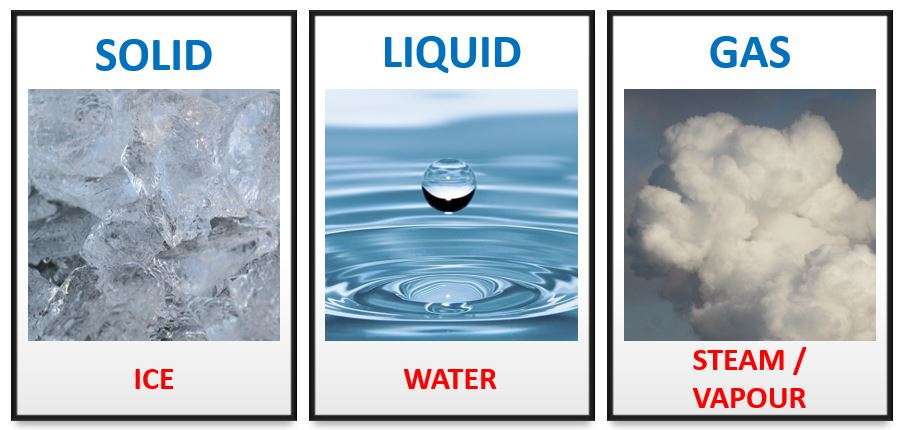
- So you can see how condensation in winter months, with lower temperatures (especially with winter storms), higher relative humidity can cause problems with condensation settling, leading to things such as mould on walls.
- Remembering that as temperature rises, relative humidity falls and vice versa – so cold air can hold less moisture within in. i.e. becomes saturated (100% moisture) at a lower absolute humidity (which is different to relative humidity). For more details on this, see our detailed guide to relative humidity.
The question that is usually asked at this point is – what is the best way to measure a surface temperature. That is where something like a laser infrared thermometer comes in.
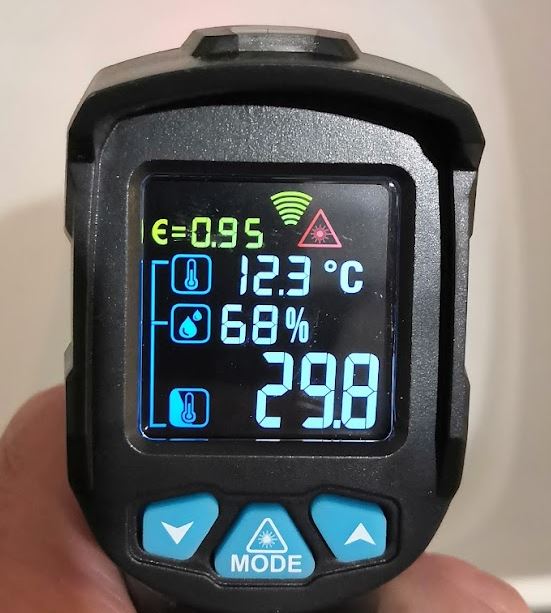
Laser Thermometers and Surface Temperatures
Laser thermometers, as the name suggests, use lasers to measure the temperature of objects. They are a fast and reliable (making sure they are used safely) way of measuring the temperature of a surface to see if it is at risk of dew point being ‘hit’ and condensation forming. Some models, like the one shown above, have a measurement for relative humidity too.
In the example above, the room temperature is 12.3°C and the Relative Humidity is 68%. The surface being measured is 29.8 °C. Putting those numbers into the dew point calculator, you can see that the dew point in those conditions is 6.5°C meaning that condensation or damp will not form on that surface. If the surface temperature was indeed below that, then condensation is likely to form.
If you have problems with condensation, damp, mould or have a water leak, get in touch with us today and we will be happy to help.
You may find our article explaining about Water Test Kit Strips beneficial too, and the next guide following that, which looks in more detail on Drinking Water Test vs Filter Water
Another useful tool we have is our water usage estimation calculator.
Additionally we have a great Bathroom Extractor Fan Calculator
How do you calculate dew point from temperature and relative humidity?
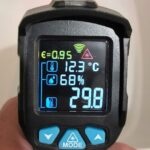
There are three ways to calculate dew point when you know temperature and relative humidity. The simplest is to use a dew point calculator, like the one on this page. The second is to use a device that works it out for you through taking psychometric readings (many professional moisture meters do this). Finally, the most difficult way is to use the formula to work it out for yourself!
How do you determine dew point?

One of the quickest and simplest ways to determine dew point is to use a dew point calculator like the one on this page. It will very quickly work out dew point of a material (to help see if it susceptible to damp or condensation) from the room humidity and surface temperature being measured. Some devices have a dew point calculator built in.